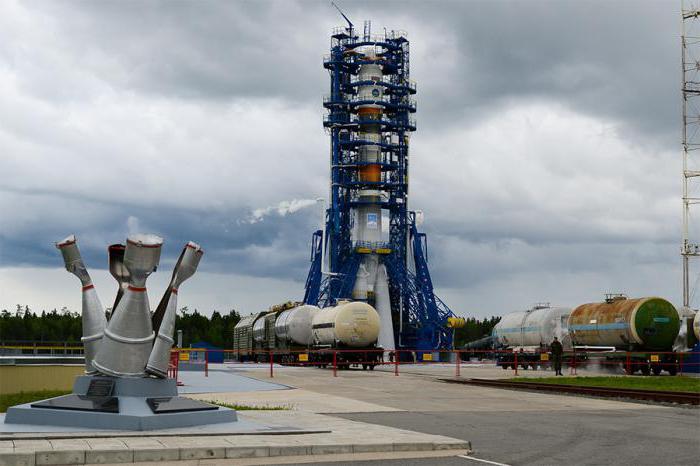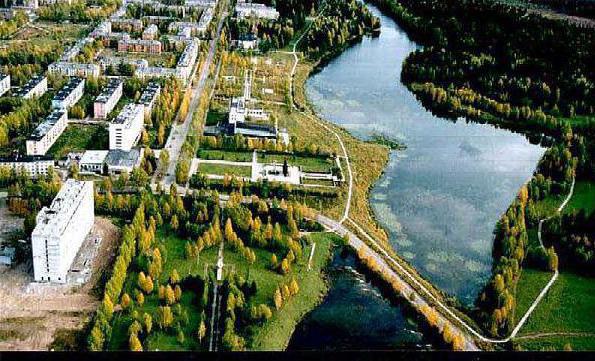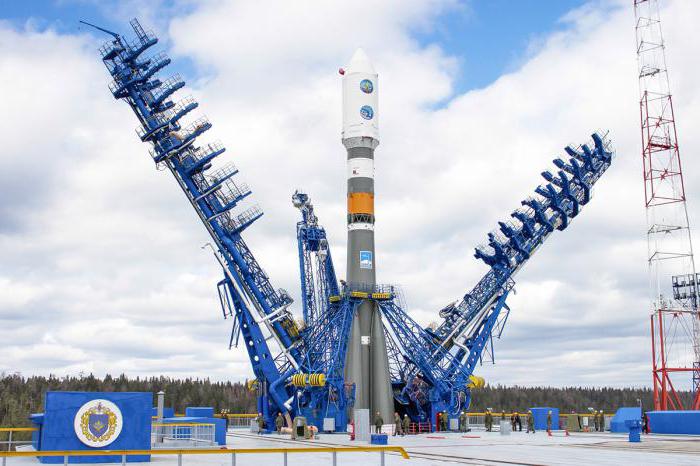In the Soviet Union, all cities with closed status have always been under a veil of secrecy. American intelligence only in 1960, three years after the launch of the first intercontinental ballistic missiles, managed to establish the location of the Baikonur cosmodrome. On May 1, 1960, an American espionage plane piloted by pilot Francis Powers flew over the spaceport and was shot down near Sverdlovsk, but a secret inter-ballistic missile formation under the command of Colonel M. B. Grigoriev was already near the city of Plesetsk in the Arkhangelsk Region.
Secret Object "Hangar"
The creation of the first in the Soviet Union connection of ballistic intercontinental ballistic missiles "R-7" under the name "Angara" began in January 1957. At the suggestion of Marshal Zhukov, the northern part of the Plesetsk district, located on the banks of the Emtsy River in the Arkhangelsk Region, was chosen as the place of its location. Residents of 18 villages living in the territory intended for the construction of a military training ground were resettled in other settlements.

The military was satisfied with the fact that impenetrable taiga, lakes and swamp swamps facilitated camouflage, and low cloudiness made it difficult to detect the complex from the air. Due to the rocky soil and steep banks of the river, the volume of earthworks was reduced and the construction time of the strategic defense facility - the Plesetsk Cosmodrome in the Arkhangelsk Region was reduced. The formation of the secret complex "Angara" was completed in 1958, and since January 1960, the personnel took up combat duty.
City Mirniy
Mirny owes his appearance to the construction of the Plesetsk cosmodrome in the Arkhangelsk region. Simultaneously with the construction of military-technological facilities, construction of residential buildings for officers and workers serving the Angara complex was begun. The first prefabricated switchboard and block houses were built from logs accumulated as a result of deforestation during the construction of the cosmodrome. In 1958, the construction of stone houses and cultural facilities began: hospitals and clinics, maternity hospitals, kindergartens, schools, a cinema, and a library.

Initially, the residential village was called Lesnoye, since it was built on the territory of centuries-old forests. In November 1960, by the decision of the regional executive committee, it was renamed Mirny, and in 1966 it received the status of a closed city of regional subordination. The cosmodrome "Plesetsk" and Mirny in the Arkhangelsk region were created in secrecy, so regardless of the place of residence in the mail, Lenin Street and the cities of Leningrad-300 or Moscow-400 were indicated as addresses.
How was the Plesetsk cosmodrome declassified?
A few kilometers from the Mirny military training ground is the district center of the settlement of Plesetsk, Arkhangelsk Region. Its inhabitants guessed about the reasons for the secrecy of the Angara object, because they regularly noticed various special effects in the sky. The first publication that in the Soviet Union besides Baikonur has another spaceport appeared in the newspaper Pravda in 1983. Prior to this, even the inhabitants of the Arkhangelsk region did not suspect the existence of a secret facility. "Plesetsk" and after that for a long time remained behind a veil of secrecy for Soviet citizens, but not for the Western media.

After the Vostok-2 launch vehicle launched the Cosmos-112 artificial satellite into Earth orbit, the British physics teacher Geoffrey Perry mathematically processed the inverse ballistic problem and calculated that the satellite was launched from a distance 800 km north of Moscow. He published his assumptions that there was another secret spaceport in the Soviet Union in the British aerospace weekly. After launching the next satellite, Perry managed to determine the exact coordinates of Plesetsk in the Arkhangelsk region.
Peaceful "Plesetsk" in the Arkhangelsk region today
The Russian Plesetsk cosmodrome is located 180 km south of Arkhangelsk. On an area of more than 176 hectares of land, there are located as many military units serving technical complexes for preparing rockets for launch, as well as launch complexes for launching launch vehicles. There are also fuel storage facilities.
Over the years Plesetsk existed in the Arkhangelsk Region, 12,000 rockets and artificial Earth satellites were launched from it - twice as many as from the rest of the cosmodromes in the world. Today, missile systems for troops with a strategic purpose are being tested at the test site, inter-ballistic missiles are being launched. Without exaggeration, the Plesetsk cosmodrome and the Mirny military training ground can be called Russia's strategic shield.